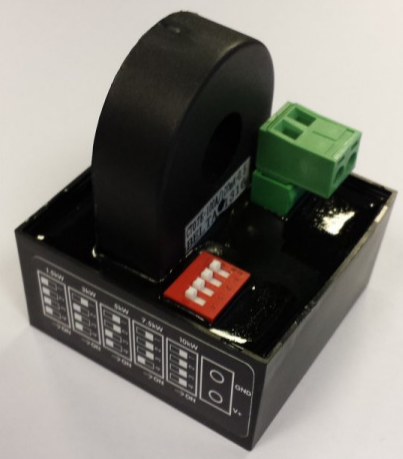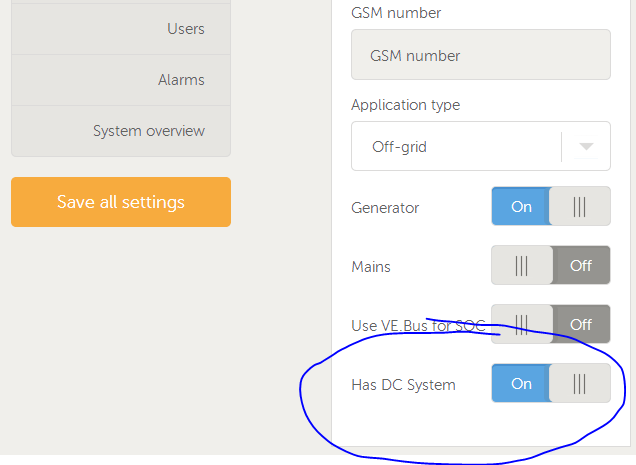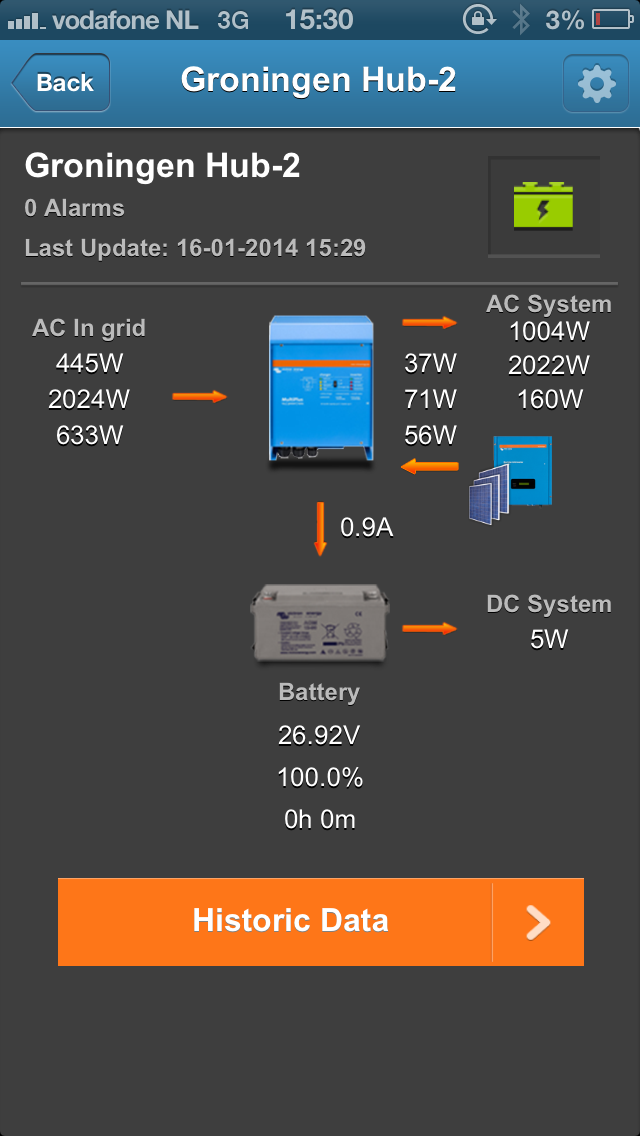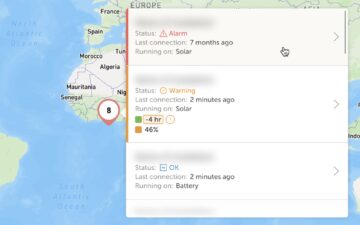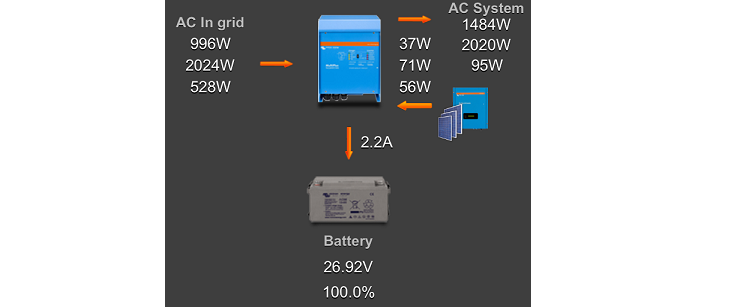
A new version of our VRM app has been released yesterday, both in the Apple app store, and the Google Play store for Android. An overview has been added: you can now see the solar yield from a PV Inverter. Another nice improvement is that we show kWs per phase, instead of just L1. And there are some more smaller fixes and changes.
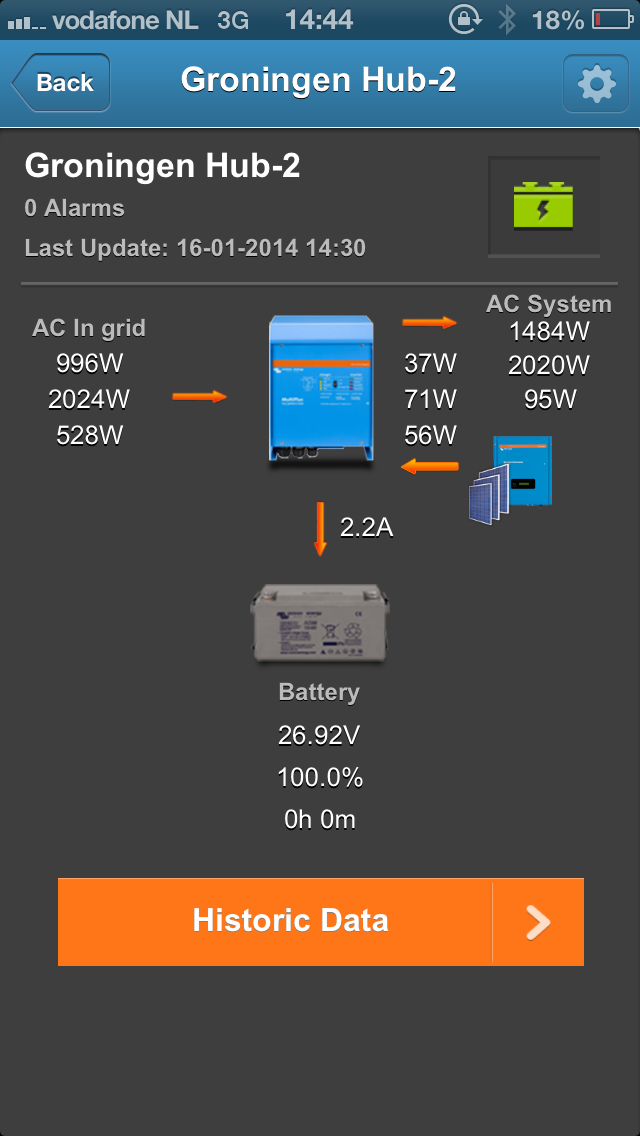 The screenshot on the right shows the new overview with the PV Inverter. The PV Inverter is connected to the output of the Multi, also known as AC-coupled PV. The overview will show you Watts per phase. For the curious: the values shown at AC System are actually the values measured by the Multi on its AC output minus the PV Inverter power.
The screenshot on the right shows the new overview with the PV Inverter. The PV Inverter is connected to the output of the Multi, also known as AC-coupled PV. The overview will show you Watts per phase. For the curious: the values shown at AC System are actually the values measured by the Multi on its AC output minus the PV Inverter power.
Which brings me to the AC Current Sensor; many of you might be wondering: and how can I measure and show the power of my PV Inverter? The answer to that is a new product called the AC Current Sensor. All requirements are listed in its manual. One of them is that you need to have a Color Control GX. The VGR2 and VER can, unfortunately, not forward these values to the VRM Portal.
Picture of the AC Current Sensor:
Nice to know: one of our software developers is working hard on a wireless version, the Wireless AC sensor. Besides being wireless it is also more accurate. And it interfaces directly to the Color Control GX. With that, we eliminate the requirements on Multi and Quattro hardware that you will find in the manual of the wired AC Current Sensor. The new Wireless AC Sensor is expected early in the second quarter of 2014.
The next new feature is hiding the DC System. Some Victron installations have other DC loads, or DC chargers connected to the batteries, and others don’t. There is now an option on VRM Portal called ‘Has DC system’, to let you customize the shown diagram:
Enable this setting when you have DC loads or chargers that are not connected to the CCGX. The system will then take the battery current as reported by the BMV, correct it for the DC currents reported by the Multi’s, Solar Chargers and also Skylla-i’s, and then show the difference under DC System. As shown in this screenshot:
Note that the DC System shown is not very accurate, especially when having very fluctuating loads. This is because the currents being used are not measured at exactly the same time.
There have been some more smaller changes. There is one I like a lot :). I hate it to have to retype my email address in a forgot password screen. Especially on a phone. So now, when you click forgot password, the used email address will be copied into the forgot password screen, making it all very easy.
If you have any questions or ideas welcome to put them in the comments below!
Matthijs Vader
